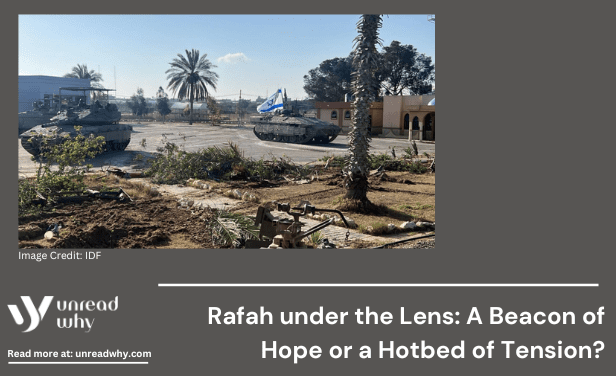Rafah is a city nestled within the southern Gaza Strip, which is the focal point for humanitarian concerns and geopolitical tensions. Since Rafah serves as the border town providing a linkage between Gaza and Egypt, it plays a major role in the dynamics happening in this region. In recent years, this region has been experiencing significant developments that have painted a complex picture of hope and conflict.
The Current situation related to Rafah
Rafah has been subjected to severe shifts caused by social, economic and political factors since 2020. Survey reports show that the overall population of Rafah has been demonstrating a steady growth rate even within the ongoing challenging situation. The official UNRWA website provides details of the Rafah refugee camp, which was established in 1949 in order to provide a security and safe campaign to the people who have been rescued from the conflict.
The security and humanitarian conditions within Rafah show significant evolvement. Recent efforts exhibit a marginal rise in the number of days that Rafah crossing remained open, facilitating more exits and entrances. The crossing remained open for 198 days and remained closed for 135 days as of late 2023, which brought improvement within the previous years but further reflected upon the sporadic nature of its operations. However, challenges persist due to the need for a permit and the bureaucratic hurdles involved. The UN and different NGOs that form the international community are working towards bringing improvement within conditions and providing necessary aid, keeping aside the ongoing conflicts and logistical issues.

Humanitarian Lifeline
The Rafah crossing is considered essential for the smooth flow of humanitarian aid within Gaza. In recent times, Lloyd J. Austin III has focused majorly on addressing the need to increase aid by using the crossings, thereby pointing out the crucial situation that is being experienced by the local population of Gaza, mainly in the region of Rafah. The United States continues to advocate for mechanisms that ensure the safety of Palestinian civilians while addressing the humanitarian crisis.
Geopolitical Tensions
Rafah is positioned right on the border of Egypt, which indicates that it faces significant geopolitical implications. The Egyptian government cooperated with international efforts, which enabled the provision of aid, thereby leading to the situation of being subjected to challenges while managing border security by addressing the political dynamics and security concerns among both Hamas and Israel.
The crucial balance between these two regions has a major impact on the lives of the residents of Rafah and also influences the broader regional stability. As Egypt remains the peace partner of Israel, it plays a major role in managing the Rafah crossing. The Egyptian government expressed their concerns regarding the potential Israeli military operations in Rafah, thereby leading to the increasing number of civilians in Rafah crossing into Egypt, which further complicated its relationship with Israel. Since Egypt and Israel give major significance to coordinating efforts in Rafah, it ensures that the humanitarian aid flows continuously and also addresses the security threats.
Military Operations
The Israeli government contemplated their military operations within Rafah, which comprised its broader strategy for combating Hamas. These operations caused a major threat to the safety of the civilian. The US remained actively involved in negotiations with Israel, which urged them to introduce large-scale military actions. The primary focus was on phased activities and precision targeting to reduce civilian casualties. The international efforts given by the NGOs and UN played a crucial part in mitigating the influence of the conflict over the civilians of Rafah and looking after the matter of essential supplies reaching those in need. The situation of Rafah remained complex, compiled with intertwined issues regarding security, humanitarian aid, and international diplomacy.


